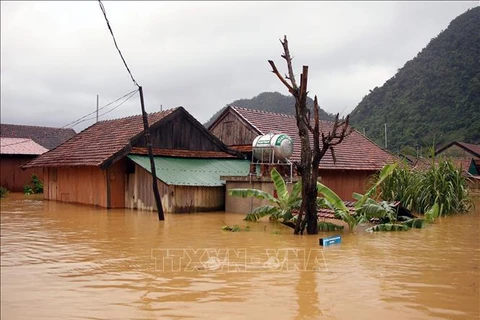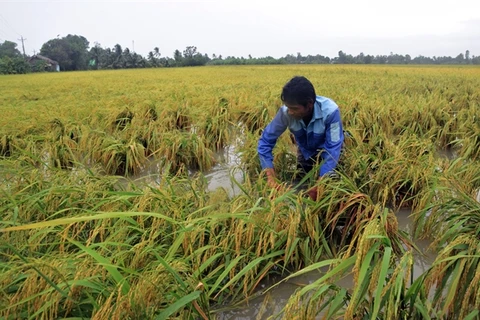 Erosion occurred at the Phung An Canal in Soc Trang province’s Ke Sach district in June (Photo: VNA)
Erosion occurred at the Phung An Canal in Soc Trang province’s Ke Sach district in June (Photo: VNA) The coastal province is normally affected by saltwater intrusion into rivers in the dry season and erosion along the sea, rivers and canals.
It has had more than 20 strong winds that flattened or blew off the roofs of more than 80 houses, injured one person and damaged nearly 1,000ha of rice so far this year.
It has suffered erosion on 60 occasions along a total of 3,400 metres of land, with Ke Sach and Cu Lao Dung districts and Vinh Chau town being the worst affected.
The provincial People’s Committee has allocated 5.3 billion VND (220,000 USD) to Ke Sach to cope with its erosion along embankments and riverine islands and 3.1 billion VND (130,000 USD) to Long Phu district for riverbank erosion in Song Phung and Phu Huu communes.
The province has built saltwater prevention sluices and erosion prevention embankments, and plans two more coastal erosion prevention projects in Vinh Chau town at a cost of 143 billion VND (6 million USD).
In the first eight months of this year the province took various measures to combat saltwater intrusion, including warning farmers not to grow a late winter-spring rice crop in some localities to avoid a shortage of irrigation water at its end.
Vuong Quoc Nam, deputy chairman of the provincial People’s Committee, said the province would have human resources standing by for preventing natural disasters, conduct more disaster-prevention drills and strengthen inspection and penalties to prevent violations of regulations.
The local Steering Committee for Natural Disaster Prevention and Control, Search and Rescue and Centre for Hydro-Meteorology Forecasting will focus on forecasting high tides, dangerous weather, low pressure systems, storms, and saltwater intrusion.
The province will work to raise public awareness of prevention and control of natural disasters.
It will zone residential areas and restructure agricultural production to cope with natural disasters, and relocate households in disaster-prone areas to safer places./.
VNA























